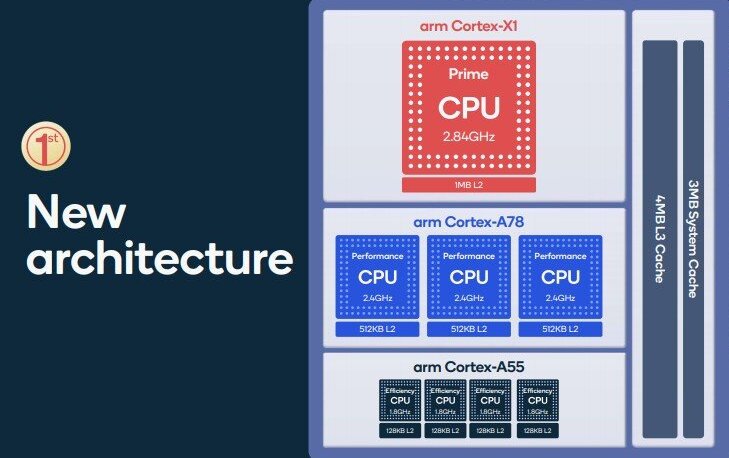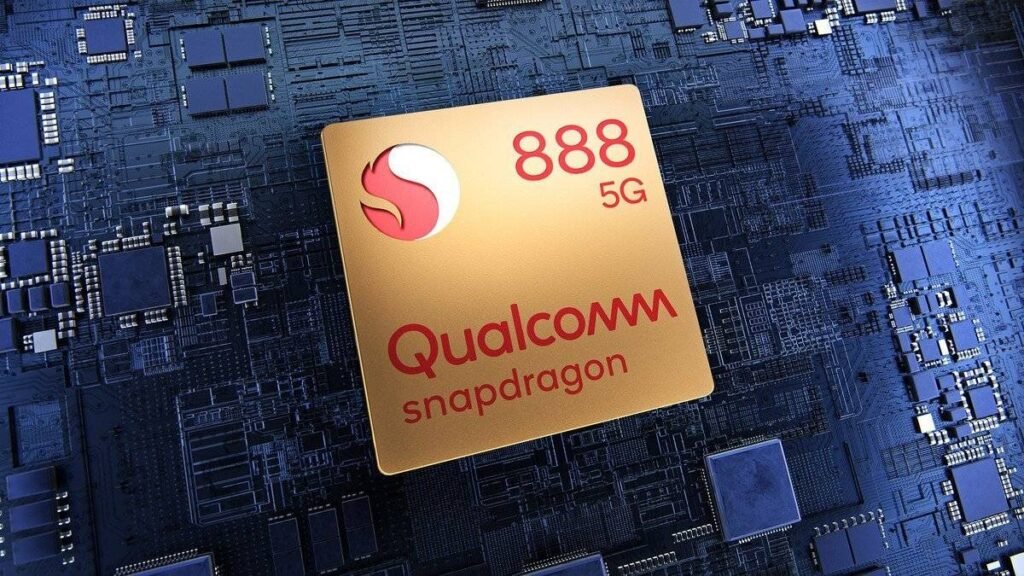Qualcomm has announced its 2021 chipset Snapdragon 888. It is the better, smarter, and most potent chipset so far. It uses the 5nm process that delivers performance with remarkable efficiency.
Snapdragon 888, the number game
Qualcomm mentioned some pretty good upticks, which makes Snapdragon 888 with the best Y-O-Y increment; ever seen in the 800 series. The numbers show that it has a 25% faster CPU, 35% faster GPU, hugely 73% faster AI engine, and significant gains in WiFi and 5G speeds. As it shows a massive difference in power, I assume battery life will remain unchanged or shows a considerable increase.
Snapdragon 888’s CPU is a real beast
Snapdragon 888 has the same 8-core processor with new Cortex cores. It uses 8-cores in 1 + 3 + 4 configuration. The primary core is Cotex X1 that clocks up to 2.84GHz; the next 3 are Cortex A78 cores that clock up to 2.4GHz, and the remaining four energy-efficient cores being Cortex A55 and can clock up to 1.8GHz.
Prime one, which is the newest Cortex X1, delivers beastly performance that hasn’t been seen in Android history yet. It’s superpowerful, and users looking to upgrade their phone next year can have a good reason now.

Snapdragon 888 can handle display with QHD+ resolution at 144Hz and even 4k at 60Hz. Also, it does support HDR10+ and Dolby Vision. It comes with WiFi6 up to 3.6Gbps powered by the new Qualcomm FastConnect 6900 system. Also, it supports a 6GHz WiFi band, which was seen nowhere yet. Bluetooth 5.2, Qualcomm’s AptX suite, Glonass, BeiDou, Galileo, QZSS, NavIC, and SBAS are all in. Manufacturers can add up to 16GB LPDDR5 RAM modules at 3200MHz.
Snapdragon 888 with Adreno 660 has desktop-level capabilities
Adreno 660 is reportedly 35% faster and 20% more efficient than its previous generation Adreno 650. Qualcomm has mentioned the new Game Quick Touch feature in its Snapdragon Elite Gaming suite, which minimizes touch latency by 20%.
Qualcomm introduced Variable Rate Shading (VRS). It’s a desktop and console-level capability that saves most of the GPU resources to give smoother and efficient gameplay. The VRS gives developers better control over the render. It considers similar pixels and static pixels like background and renders them at a single time. As the process minimizes the GPU resource usage, games are playable at better FPS and consume lesser battery.
Snapdragon 888, a peak leap in Cameras
Snapdragon 888, with its new Image Signal Processor and AI, can take the camera to a whole new level. In other words, it can now rival a DSLR. Qualcomm’s Spectre 580 now has three 14-bit image signal processors (ISPs) that can take in 2.7 Gigapixels of light per second, which is 35% better than the previous gen. For instance, The single ISP can shoot 120 pictures in a second or three 4K HDR videos simultaneously. It can capture a 4K video at 120FPS and also 8K at 60FPS. It will now support up to 200MP image sensors.
Qualcomm said it could capture from three 28MP cameras at once. For instance, if you got three cameras and now all the three can capture at the same time at higher megapixels each, which significantly provides an extreme dynamic range when all three layers are combined.
Qualcomm associated with Truepic to find fake or altered photos and videos. Snapdragon 888 is the chipset that is first compliant with the Content Authenticity Initiative standard.
In conclusion
Snapdragon 888 seems to be the perfect and powerful chip for 2021. However, the manufacturers such as Xiaomi and Realme, and a few more are already announcing their upcoming phones that feature this chipset. So this mobile chipset with desktop-capabilities can be seen in flagship mobiles from Q1 of 2021. Let’s just wait to get our hands on this beast.
Visit Qualcomm Snapdragon 888 official product page for more brief information and specifications.
So that’s it for now. Thank you for reading, and do share the article if you get a bit piece of information. Also, keep an eye on this space for more relevant updates. Stay safe, and we hope to see you around.
